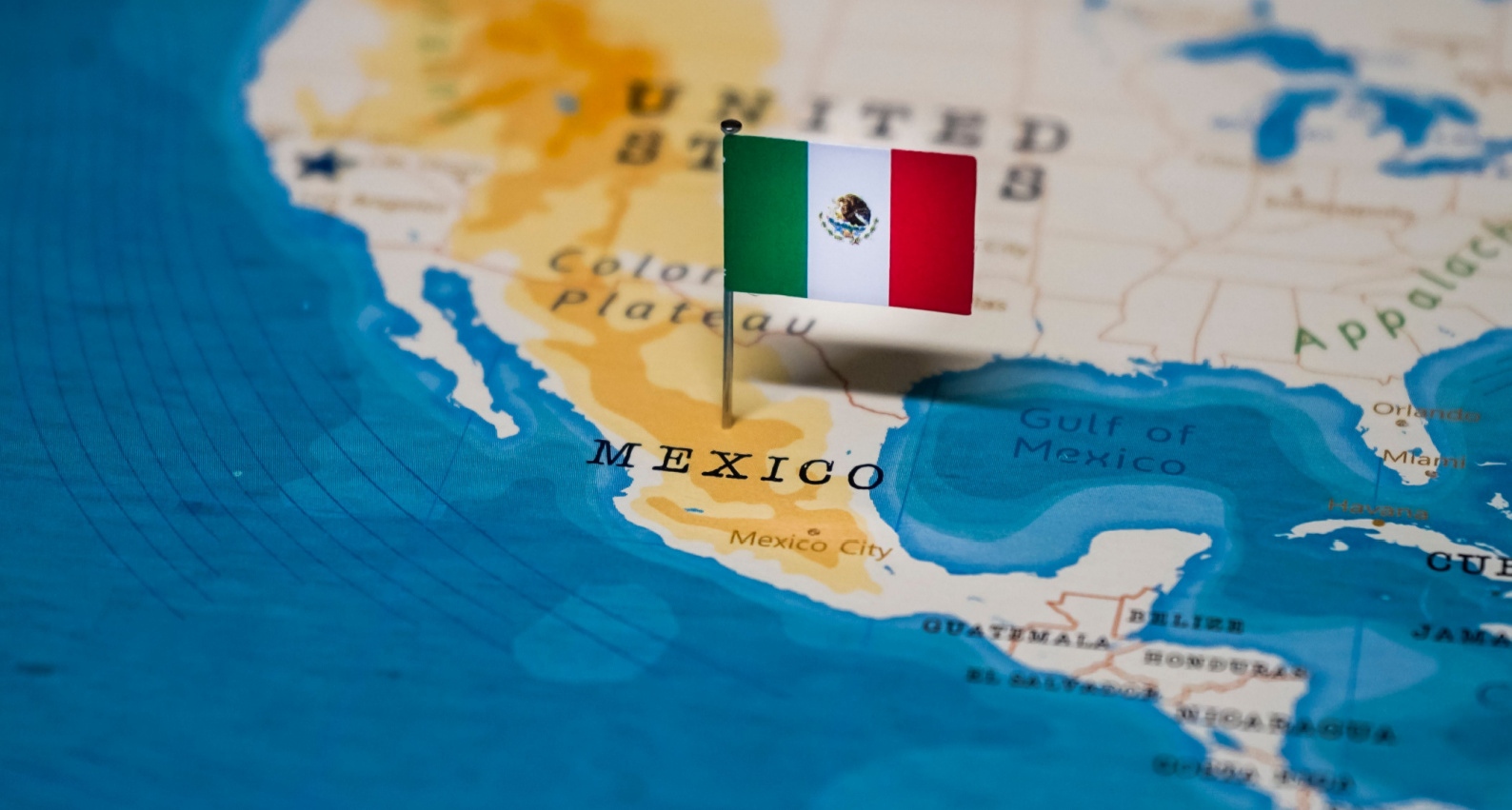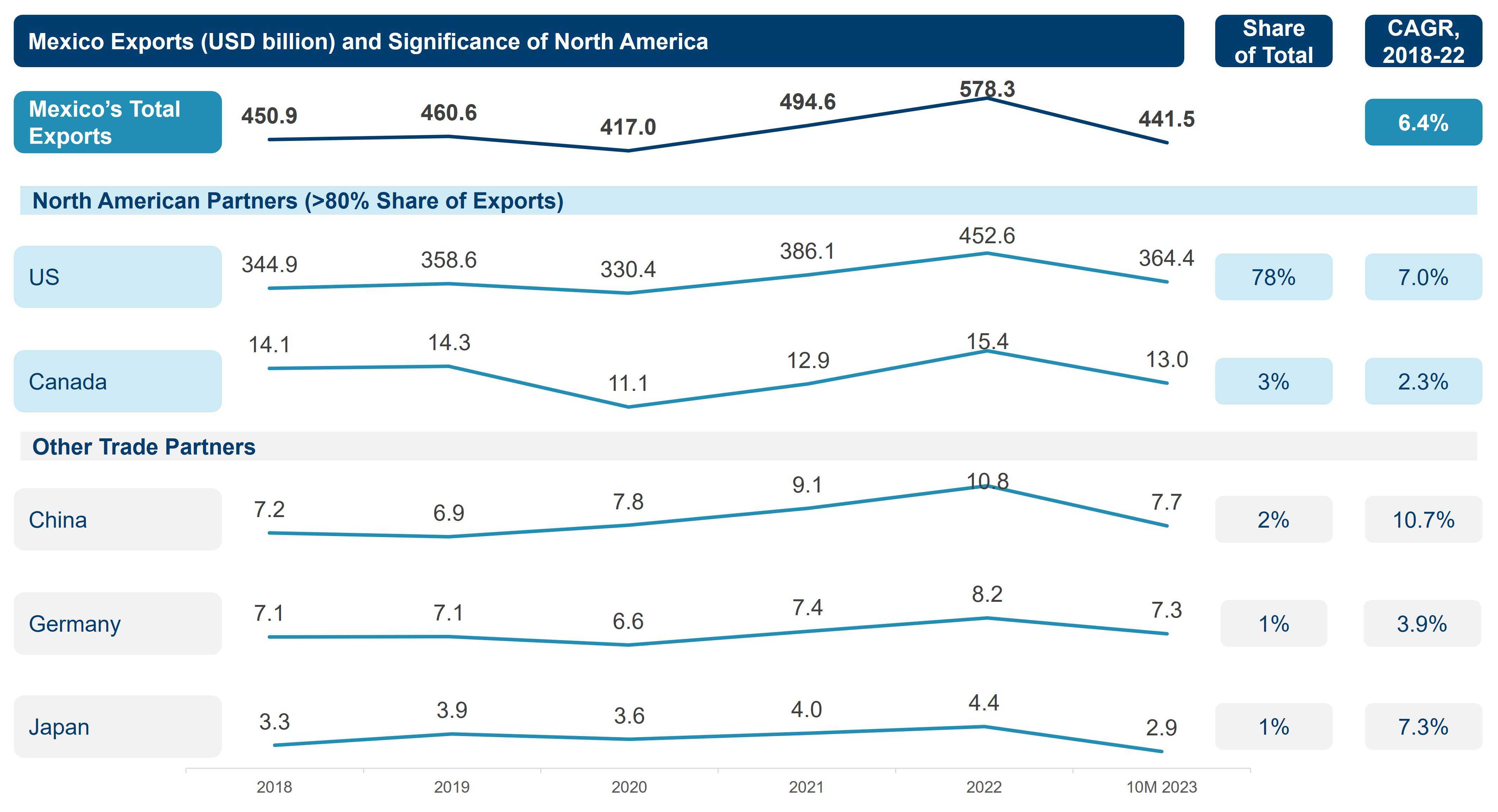Mexico's Nearshoring Promise to Supply Chain Adversities
Published on 15 Feb, 2024

As the world navigates a series of supply chain disruptions, staying ahead of the curve is crucial. Exploring nearshoring opportunities becomes increasingly important to mitigate risks and build resilience. Mexico is emerging as a promising nearshoring destination to global companies (especially in North America) due to inherent benefits such as logistical proximity, reduced lead times, cost efficiency, and strategic trade relations. Procurement organizations have actively embraced Mexico, making regular investments, expanding capacities, and fostering supplier partnerships to reap the benefits of nearshoring. Are you prepared for nearshoring to build a resilient supply chain strategy?
In today’s dynamic landscape of global business, supply chains are increasingly facing disruptions due to geopolitical and economic situations, such as the Russia-Ukraine war, the Israeli–Palestinian conflict, US-China trade tensions, and rising inflation. Amid these complexities, operational hurdles such as supply-demand imbalances and labor shortages have intensified and led to increased costs of production due to rising material, energy, and labor costs.
Despite challenges, Mexico is emerging as a crucial trade ally of North America. Its increasing prominence as a preferred supply source, replacing China, is reinforced by shared advantages, positioning it as a favored nearshoring destination. The USMCA agreement accelerates this shift, redefining cross-border trade and unlocking transformative opportunities across industries.
Surge in Nearshoring to Mexico: Trade Unveiling Clear Evidence
Over the last decade, nearshoring in Mexico has been on a consistent uptrend driven by various factors. Primarily, the persistent trade conflicts between the US and China have injected a sense of uncertainty into the realms of production costs, IP concerns, lead times, and delivery.
Nearshoring in Mexico irons out the supply chain concerns related to uncertainties, costs, and delivery for most of the US-based manufacturers.

Mexico's role as a primary nearshoring ally to North America is unmistakably evident through the increasing exports to the US and Canada. In 2022, Mexico's exports to North America accounted for over 80% of the country's global exports, a figure that rose to over 85% during January to September 2023. Export growth, which exhibited a 6–7% CAGR during 2018–22, experienced a significant acceleration to a 17% CAGR following the implementation of the USMCA agreement in 2020.
In fact, as per the U.S. Census Bureau 2023 data, Mexico is now the top export partner to the US (USD 476 billion in 2023) surpassing China (20% export decline to the US in 2023). The shift occurs as companies seek to diversify their supply chain sources to Mexico amid fluctuating US-China relations.
Benefits of Nearshoring in Mexico
Nearshoring in Mexico strategically empowers supply chains with cost efficiency, resilience to external shocks, and flexibility to scale requirements. Key benefits of nearshoring in Mexico include:
- Proximity and Time Zone Advantage: Ensures shorter supply chains and faster response times for companies, leveraging geographical proximity.
- Cost Efficiency: Opportunity to leverage optimal labor costs, utility costs, and operational expenses resulting in a substantial overall cost efficiency gain.
- Quality Production and Expertise: Access into Mexico's strong manufacturing expertise, and skilled resource pool, particularly across the sub-tier value chain of industries.
- Strategic Trade Agreements: USMCA fosters favorable trade conditions, eliminating or reducing tariffs and trade barriers, allowing wider supply chain access.
- Resilience: Greater flexibility for companies to adapt to market changes and demand fluctuations, allowing for swift adjustments.
Rising Investment Confidence for Nearshoring
Mexico has emerged as a preferred destination for nearshoring projects among US-based companies. Mexico's FDI inflows reached USD 33 billion in the first nine months of 2023, marking a strong 30% increase compared to the year-ago period. More than 40% of the investments originated from the North American region; notably, the manufacturing sector's share of FDI in the country doubled, reaching 53%.
Multinationals across industries are active in responding to supply chain disruptions and building resilience by nearshoring in Mexico. Here are some key examples of industries that have been leveraging Mexico’s nearshoring opportunities through direct investments:
- Automotive: FDI inflows in automotive reached USD 7.7 billion during 9M2023 (USD 4.3 billion in 2022), registering 25% growth since 2020. Auto exports also witnessed a whopping 15% y-o-y growth in 2023.
- CPG Industry: The CPG industry in Mexico marked a record FDI of USD 3.0 billion during 9M2023, displaying >30% growth since 2020. Personal care, Cosmetics and Grooming have been emerging as the top categories, with exports crossing USD 2.5 billion in 2023.
- Metal & Industrials: The combined FDI for the industries crossed USD 5 billion during 9M2023, recording a robust 5x growth over 2020.
- Other Industries: Sectors such as Chemicals, Plastic, and Rubber have also been registering steady growth, wherein FDI neared USD 2 billion during 9M2023, registering 27% y-o-y growth.
Conclusion
Robust expansion of the economy and exports, a burgeoning manufacturing sector, a favorable trade agreement (USMCA), and a promising investment climate positions Mexico as a compelling and dependable sourcing option for procurement organizations. As global dynamics shift due to supply chain disruptions, Mexico is poised to evolve as an attractive nearshoring destination, primarily for companies based in North America/the US.
Embracing Mexico as a nearshoring partner is expected to empower procurement organizations to not only build a resilient supply chain but also provide a competitive edge in terms of market position.
